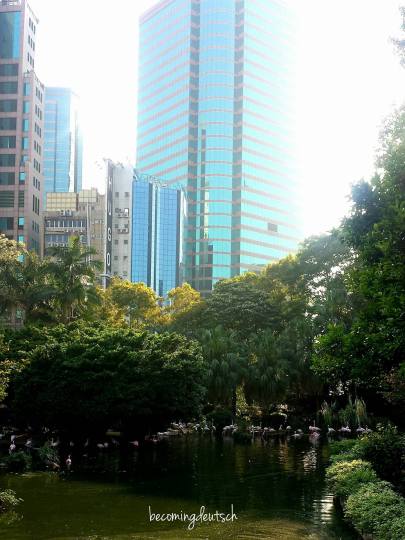 Those staring eyes and some judgmental glimpses can tip you off your “who gives a shit” mode, really. You stroll around the mall, or wait for the taxi like you usually do but people just can’t stop turning around trying to check you out from head to toe. Perhaps because you are standing right next to your Caucasian (or foreign) boyfriend (or husband), you automatically becomes an unwilling specimen for public assessment.
Those staring eyes and some judgmental glimpses can tip you off your “who gives a shit” mode, really. You stroll around the mall, or wait for the taxi like you usually do but people just can’t stop turning around trying to check you out from head to toe. Perhaps because you are standing right next to your Caucasian (or foreign) boyfriend (or husband), you automatically becomes an unwilling specimen for public assessment.
Those stares? I don’t really get it. Have you ever got that uncomfortable feeling?
I bet my fellow Pinays who are on the same boat can attest to the same. Though I generally find it funny, my humanity says it is okay to be pissed or to fight back when I feel violated in any way. Seems to me like being hand in hand with the love of your life (who happens to be a person outside of your race, and this isn’t really your fault) can trigger some attention.
When friends and I see a fellow Pinay with a foreigner strolling around here, of course we look, and that is mostly out of admiration or utmost disbelief (if you know what I am saying. 😉 But, to stare and give a meaningful and demeaning look is another story.
Yep, we are aware of the points and the possible reasons by which you have your beliefs anchored, but do not compartmentalized all of us in a single, concrete category. This isn’t fair, and you don’t want to hear what we want to say.
Being in a happy relationship and living in a quite judgmental culture can be stressful and challenging. Don’t get me wrong, I never fall short of my self-assurance and confidence but things can just get to you too.

Here’s the top 5 stupid things Pinoys say about marrying a white guy (or any foreigner for that matter) on this side of the planet:
1) You are only looking for a visa (Escape from hellhole)
When I say hellhole, it doesn’t just mean the corrupt society. Of course, this is an obvious reason many would choose to go somewhere else for a better opportunity, and the Philippines isn’t the only country that suffers this. Anyhow, you could hear people telling you that soon you will leave and go skiing in the Alps or maybe in Colorado or wherever the dollars or Euros keep flowing like water in a river. This river will surely become longer than the Amazon as it will go across continents to fund the “poor” family. And with this, “You are a lucky girl” reverberates often.
2) No local guy likes you (You are ugly as a cursed doll)
Another thing they might associate with you dating or marrying a white guy (or anyone outside your race) is that you are ugly or quite unacceptable for local men. That no local guy will take you seriously or see you walk towards the altar coz you are “just isn’t worth it”.
This is especially true as a good number of Pinays who marry foreign men have kids out of wedlock. “How can this happen?” you might ask. Some local guys will capitalize on the woman’s fragile heart, and after he succeeded in pushing her to “prove her love” to him and she got pregnant, she is left to herself. What a perfect setting to find a girl with a virginity ring!
3) The guy is a sex tourist (A loser in his country)
Okay, let us admit it, many guys we see here dressed quite lousy. How many of us have seen a much older guy in his near-rag- state T-shirt and shorts paired with sneakers with a pair of socks reaching the mid-calf walking hand in hand with a girl just past her teenage years? I bet we’ve seen countless, right?
Now, don’t let this be the mascot of everyone else. Decent white (foreign) men are even ashamed of this too. Not all foreign guys who fly here are out to hunt for a 3-month casual sex partner (though many actually are, too), and not all local women who date these guys are leftovers.
4) You do it for the money (A lazy girl looking for a sugar daddy) 
There might be countless stories of a foreign guy so deeply in love that he lost his sense of reality because the “exotic-looking” tanned Pinay just two-timed him. And because he couldn’t find a girl back home, he will settle for the one who showed him love, though not the genuine one. Women who do this are great local entrepreneurs; earning money by capitalizing on their continuously depreciating asset (if it really is). I would like to say that if he is a loser or a sex tourist and she is an entrepreneur, then it is but fair if their paths had crossed. Sad enough for those who are caught in such a parasitic exercise though they actually offer genuine affection.
You attract what you exude. A decent person would almost always find someone who is the same; and you know what goes for those who aren’t. This is not rocket science.
5) If he doesn’t give in to financial favors asked, he is frugal or selfish (He must feed the village)
The white guy (foreigner) is rich (and if he doesn’t give a dime, he is too frugal, or worse, selfish). Of course, we’ve all heard this story. When you are dating a foreign guy or maybe married to one, most people would think you have your pockets full of cash coz you hang around with a walking ATM. When you go out to eat and the guy pays for this, some people will find this as “taking advantage”, and not gentlemanliness.
Oh, yes, the longest money river in the world, right? How about the cost of living in his country or his monthly income and expenses? He doesn’t eat, yeah?
People, doesn’t matter which race, have their own bills to pay. When a foreign guy flies in, he, of course, will spend a lot of money for this. This doesn’t mean, however, that he is rich. Majority of the guys will have to save up to the last penny for the entire year or two to purchase a ticket. These are hard-earned cash. And yes, the Philippines isn’t a cheap place to travel (check out how much money the foreign guys can save travelling somewhere else in SE Asia).
If you go knocking on his girlfriend’s or wife’s door, asking for money and expecting to receive something to bet on the afternoon gamble by the neighborhood, you are bound for a disappointment, so forget about this.
Money do not grow on trees, much more from white (foreign) guys. How many women who marry for the money ended up jumping from one marriage to another trying to cash on all of them?

How much patience do you have for upfront stupidity? I bet we all have very different approaches to facing this, and that our humility is definitely that of humanity. You know, we also get tired of being unjustly judged.
I have experienced some stares a couple of times. I would shrug it off often except when the two middle-aged women in a restaurant were staring at me like I am a corpse called back to life. I stared back with a questioning eyebrow, and off they went to a different table.
Are you in a relationship with someone from a different race?
What stereotypes must you face?
How do you deal with it?


























